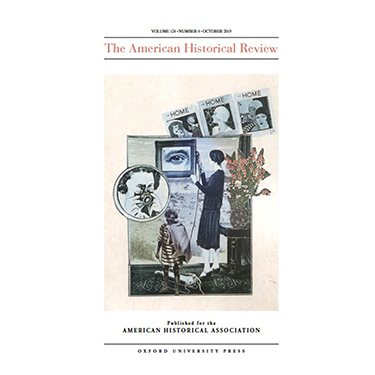Domesticating Colonizers
Professor Victoria Haskins’ research into the placement of Indigenous girls and women into white homes has been highlighted in a recent article published in the American Historical Review journal.
Domesticating Colonizers: Domesticity, Indigenous Domestic Labor, and the Modern Settler Colonial Nationexamines how the state constructed and regulated relations between Indigenous and white women in the home through the outing program that ran between the 1880s and the Second World War in the US, and the various Aboriginal apprenticeship schemes in Australia.
The article came about when Professor Haskins was invited to be part of a panel on “Global Domesticities” at the 2017 annual American Historical Association conference held in Denver, Colorado, on the basis of her groundbreaking work on Indigenous histories and domestic service.
“I agreed and we had a very interesting and productive discussion at that conference, with a great audience response, resulting in the editor of the American Historical Review asking if we would put together a set of papers for the journal’s Forum section.”
Regarded as the premier journal for historical studies in the United States, the AHR had recently taken steps to be more responsive to, in the words of editor Alex Lichtenstein, “the exciting new voices that are challenging the historical profession to live up to its responsibilities to a diverse society”. It was an opportunity to bring the complex history of Aboriginal and Native American domestic labour to a wider international audience.
The conference panel consisting of leading historians of domesticity and gender in Europe, Asia, and North America agreed to follow up at the forthcoming Berkshire Conference of Women Historians in New York later that year to further workshop the papers.
In her article, Haskins articulates how “domesticity came to be regarded both as a force for civilizing and as a sign of civilization in the modern settler colonial nation through the very process of state intervention in the domestic arena.”
Haskins uncovers how concerns that those who would choose to employ Indigenous girls would not be motivated by altruism, nor indeed anything other than the urge to exploit and abuse them, were expressed from the outset.
“Such negative characterizations of would-be employers were shot through with ideas about class, race, and respectability. It was evidently presumed that only the less desirable type of people would be willing to take Indigenous girls into their homes (and for the wrong reasons), while the more desirable employers would need to be cajoled and persuaded.”
She says that officials in both countries actively courted employers whom they wanted to hold up as the standard, “identifying them according to an equation of domestic virtue with whiteness, seclusion, and a husband who worked at a well-paid job in an office of some kind.”
Haskins concludes the article reflecting all women were objects of an interventionist reform agenda and subjects of state surveillance.
“The modernizing industrial state of the early twentieth century looked to the home as the key arena for reshaping Indigenous people in an era of modern citizenship, while simultaneously and more broadly reforming interactions between Indigenous and settler communities.”
The University of Newcastle acknowledges the traditional custodians of the lands within our footprint areas: Awabakal, Darkinjung, Biripai, Worimi, Wonnarua, and Eora Nations. We also pay respect to the wisdom of our Elders past and present.